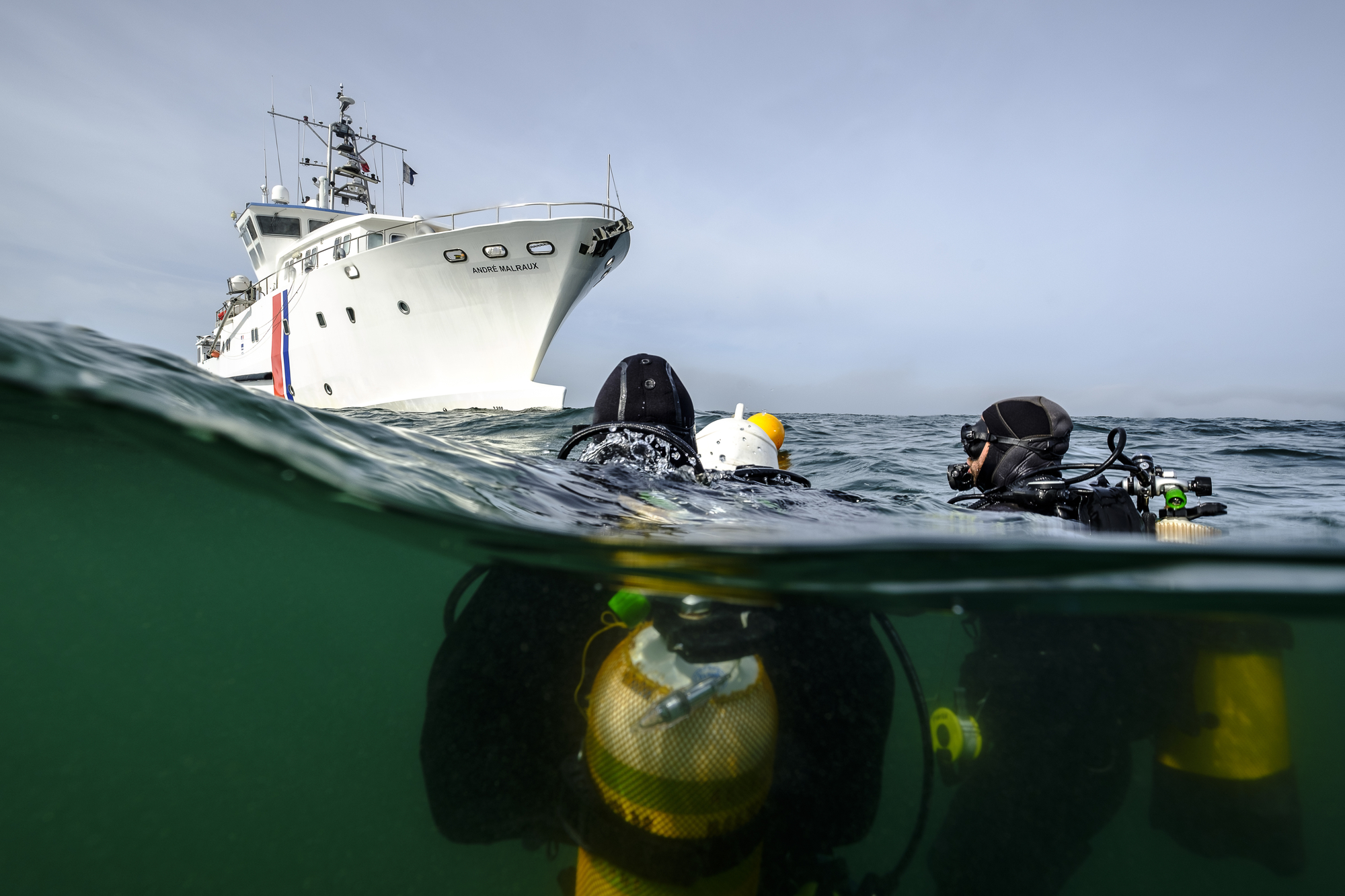
- Home
- A systematic inventory (2015-2019)
- Remains representative of participants in the D-Day landings ?
The majority of the remains inventoried in the Baie de Seine are of British or American origin. However, some sites attest to the participation of other Allied nations in Operation Neptune.
The importance of the Commonwealth forces
Given that some of the underwater remains have not been precisely identified, it is difficult to determine their nationality with certainty. We can nevertheless confirm that approximately one third of the wrecks inventoried are of British nationality, or that they sank in the landing sectors allocated to the Anglo-Canadian forces, while two-thirds of the remains identified are of American origin. However, Anglo-Canadian forces constituted the majority of the D-Day contingents, contrary to the image conveyed by works of fiction, especially films, which have greatly emphasised the role played by American troops.
The Allied nations
No less than 17 Allied nations took part in Operation Neptune. The ownership status of the ships did not necessarily reflect the nationality of the sailors serving on them. Certain destroyers, as well as British corvettes and vedettes, were manned by Canadian, French, Dutch, Polish, Norwegian, Belgian or Greek sailors.
For example, the British destroyer HMS Shark, launched in 1943 and renamed Svenner when it was transferred to the Norwegian Navy in March 1944, was later assigned to the 23rd Destroyer Flottilla of the Royal Navy with a Norwegian officer as captain. Captain Holter had taken refuge in England after scuttling his ship to prevent its capture by the Germans. The Svenner was charged with escorting ships to Sword Beach where it was to bombard enemy defences. On 6 June 1944, the convoy was attacked by three German torpedo boats from Le Havre. One of the 18 torpedoes launched struck the destroyer in its centre. The stack was propelled backwards and the ship heaved upwards and sank, at 5:35, killing 30 men. The survivors were rescued by the St Adrian.
The participation of the French Navy
Besides from the famous Kieffer commando (1er Battalion de Fusiliers Marins Commandos), which landed on Sword Beach on 6 June, the French Navy engaged other naval units on D-Day, in particular the cruisers Georges Leygues and Montcalm which opened fire on the defences of Omaha and Port-en-Bessin. These ships were part of the Forces Navales en Grande-Bretagne (FNGB), formed in 1943 when the Forces Navales Françaises Libres (FNFL – Free French Naval Forces) joined forces with naval vessels in French West Africa.
Two French cruisers were dispatched for Operation Neptune, and four frigates guided the waves of the assault and escorted the convoys, with the assistance of four corvettes. The famous Combattante (former British escort destroyer Haldon) covered the Juno sector, before enabling General De Gaulle to land on French soil, in the Courseulles-sur-Mer / Graye-sur-Mer area on 14 June 1944. Its wreckage, documented by GRIEME divers, does not lie in the waters of the Baie de Seine, but rather off Grimsby (Great Britain). In the Baie de Seine, the only wreck that testifies to the participation of the FNGB in the D-Day landings is that of the battleship Courbet, scuttled on 9 June to form part of the Sword breakwater.




